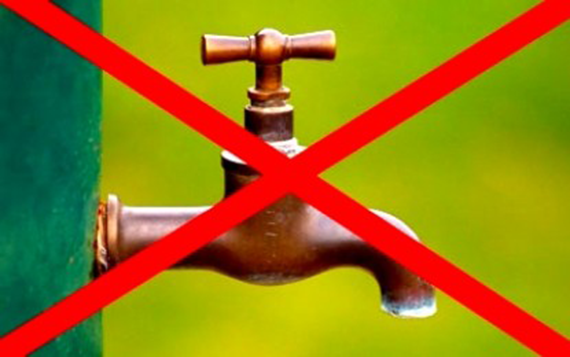Incentives in the future? SP must
cut water consumption by 28 percent
May 08, 2015
By Peggy Kelly
Santa Paula News
Santa Paula must cut its water consumption by 28 percent from its 2013 baseline, a move the city is preparing for including programs to help people save water.
The cut mandated by the State water Resources Control Board for urban users was finalized Tuesday at a meeting where one board official described the four-year drought as “beyond the worst-case scenario…”
Santa Paula is not alone with cities throughout the state having to tighten the water belt to varying degrees: residents of Moorpark — where per capita use of water a day is 172 gallons — must turn off the faucets the hardest with a 32 percent reduction in water usage.
Matching Santa Paula’s mandated 28 percent reduction in water usage are Fillmore, Simi Valley and Thousand Oaks. Santa Paula was ahead of the water saving game by asking for voluntary cuts that finally totally 20 percent a goal not yet attained. Each of the cities including Santa Paula that are required to cut water use by 28 percent has a per capita consumer rate of about 160 gallons.
Other cities in the county will also have cuts but not as dramatic: Camarillo, 20 percent; Ventura, 16 percent; and Oxnard and Port Hueneme just 12 percent each.
Camarillo will have to reduce water use by 20 percent, Ventura by 16 percent, and Oxnard and Port Hueneme by 12 percent each. Per-capita water use in those cities is much lower and only 66.6 gallons per day in Oxnard, which will only have to reduce its water usage by 1 percent due to past efforts.
Interim Public Works Director Brian Yanez and Caesar Hernandez said earlier this month that the city is already planning for more cutbacks including programs for citizens.
Yanez said the city first had to know what reduction would be mandated — a cut that will last nine months to start — to fine tune plans.
“The city of Ventura is looking into a turf rebate program,” that Hernandez said Santa Paula could replicate or even partner in.
But even artificial turf has tough requirements: “Lawns would have to be replaced with percolating turf,” that allows water to trickle down into the ground below it and comply with storm water runoff mandates.
In addition, “We would have to work with the Planning Department,” to reexamine landscape requirements.”
Yanez said a likely scenario would be to retool the ratio of landscaping required for any development, from a private home to a shopping mall or industrial center.
“We’ll have to rethink that…in the current time we’re living we’ll have to reduce that percent,” or have alternatives for landscaping that are drought tolerant.
And changes noted Hernandez would be in the form of an emergency drought initiative that could be temporary so “In better,” and wetter ”times we can go back to the current codified requirement.”
Yanez said a possible rebate program to replace lawn with artificial turf could be expanded to include appliances “That are not water efficient” and even free giveaways.
The city has given away more than 200 adjustable showerheads that not only have a more water smart flow but also allows the user to easily turn off the water while they lather up.
Yanez said dishwashers, washing machines and toilets are now manufactured with an eye to saving water; if you have old models of the former two only operate them when they are full and for the latter, well, if it’s yellow it’s mellow — and you don’t have to worry about flushing with each use.
Said Yanez, “I’m probably going to have to send out letters to school campuses and the cemetery,” about water conservation.
But although parks are turning brown Hernandez said it would make no sense to let lawns die due to the expense of replacing them: “We’ll give the lawns enough water to stay alive — barely…”
A report is being prepared for the City Council that Hernandez said would note, “What our water reduction looks like.”
Yanez said the mandatory water conservation efforts would also apply to all new development, including Limoneira’s East Area 1 who will have to use water efficient drip irrigation systems.
“We’re going to follow this reduction as much as we can here,” although Yanez said many of the sanctions apply to those that use state water rather than the groundwater that Santa Paula relies on.
Nevertheless, he noted, the basin is on the verge of hitting — and exceeding — the all time low it reached in 1981.
Hernandez said the state is taking “A pragmatic approach…everybody is in the same boat but the ones that rely on the snow pack are in bigger trouble,” than those such as Santa Paula that only need rain — albeit lots of it — to be replenished.
The state mandates do not apply to agricultural users although the board urged suppliers to require such customers to take conservation measures that they can.



